Discover Szczecin
People, places, possibilities
Szczecin, capital of the Western Pomeranian region, lies where the Odra river flows into the Bay of Szczecin in north-western Poland. It is only 140 kilometres from Berlin, 265 from Poznan, 363 from Wrocław, 467 from Copenhagen, 499 from Prague, 565 from Warsaw and 1058 from Oslo. Contrary to common belief, Szczecin does not lie on the sea – but only 80 kilometres separate it from the beaches of the Baltic.
Szczecin is the historical capital of the Pomeranian Princedom, whose western section, together with Rugen island, is now part of Germany. It is the largest city of the Euro-region Pomerania.
Living in Szczecin, you can easily discover Europe – traveling on land, by air, and even by sea! Flight connections form Szczecin-Goleniów airport include such cities as: Warsaw, Dublin, Liverpool, London Stansted, London Luton, Oslo, Stavanger
From nearby Świnoujście there are ferries to Sweden – to Ystad and Trelleborg. Through Sweden you can also go to Denmark, on the Świnoujście – Copenhagen line.
Get to know the most interesting places in the city!
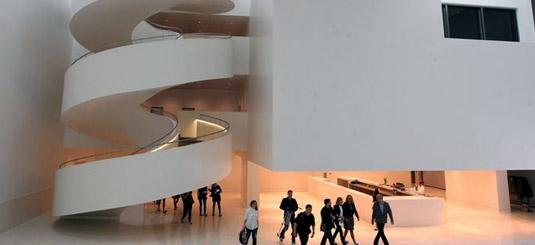
The Mieczysław Karłowicz Philharmonic Hall in Szczecin is an unusual construction, resembling an iceberg rising out of the cityscape. Its pointy shapes and glass facade, accentuated by illumination, attract people’s attention. Designed by the Barcelona studio of Barozzi Veiga, the building has gained the recognition of the international press, promoting Szczecin as a place open to innovation.
It was constructed in place of the Konzerthaus, built in 1884, destroyed by allied raids on Szczecin and taken apart after the war. The gap that this created in the building structure provoked various discussions about a place for Szczecin’s music lovers. Opened in 2014, the building enraptures with its exterior form and modern interior. Combined with world-class acoustics, this creates a magical place, attracting such star performers as Steve Vai.
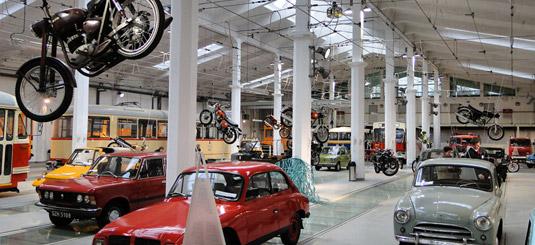
Thanks to the passion and endurance of the Szczecin Society of Fans of Public Transport, the Museum of Technology and Transport was opened in an old, former tram depot in 2010. The obtainment of a grant allowed them to renovate the object, repair the old trams there and bring them back into use, as well as purchase 32 vintage cars and 56 motorcycles from a Warsaw collector. In this way the Museum and the Art Depot, many times awarded, were brought into being.
The unique collection and well done renovation of this historical building attract people with its exhibitions, educational programs and cultural events. Filled with natural light, finished in an interesting manner, it has become a popular place for photo sessions, and has been used as an art gallery and fashion show. It is worth following its current events and discovering the treasures brought in for temporary exhibits.

The Kana Theatre and its accompanying club, Kana’s Cellar, are permanent sites on the cultural map of Szczecin. This alternative theatre won prestigious awards in 1994 – the First Fringe and the Critics Award at the International Festival in Edinburgh. The city offered it the location at St. Peter and Paul Square, and since then, one of the city’s cultural hearts beats at the entrance to the city centre, among the bridges of the Castle Route.
Kana fulfils its cultural mission by organising regular theatre festivals, artistic initiatives promoting international cooperation, and drama and dance workshops. One example is the Culture Connections [Spoiwa Kultury] – originally an international street theatre festival, which still features shows and artistic events in public space, in parks or open-air stages.
Kana’s Cellar fulfils its intercultural function as host of the Language Tandems. The tandems are meetings of foreigners living in Szczecin with people willing to practice foreign languages in an informal atmosphere in an international circle. Traditionally, a few tables are prepared for languages (English, German, Spanish, Italian, sometimes Bulgarian or Turkish), marked with flags of the countries. Participation is free; you just come at a chosen hour and sit at the right table.
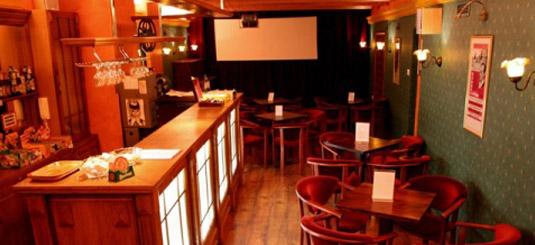
Szczecin boasts what is recognized by the Guinness Book of World Records as the oldest constantly running cinema in the world. It was established on 26 Sept, 1909 under the name Helios; today it’s called Pionier, and its cosy atmosphere has been attracting film buffs for years.
The cinema is equipped with two halls. The main hall is called the historic one – as it is there that films have been shown for over a century. Its size, unsuitable for most of today’s multiplexes, is ideal for presenting films that are not big, commercial productions. European, Asian and South American films that are most often shown here are popular with viewers looking for more artistically ambitious productions. In the other room, Kiniarnia, you can sit at a coffee table and watch a silent film to the accompaniment of a vintage piano.
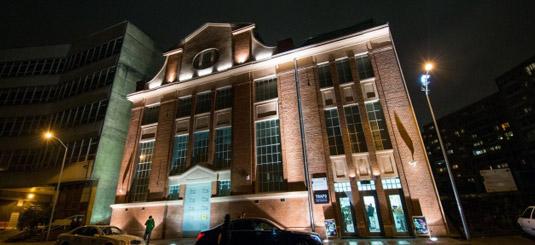
In an old electrical transformer, a modern exhibition space has been created. This industrial building was completely renovated in the years 2012-2013. Its interior was fitted out in a modernist manner, creating a space of a few floors enabling the building to be used for various exhibition activities. Especially the main hall makes an impression, as it is able to host projects of considerable size.
The object is used as exhibition space for modern art. It is becoming a part of festivals, concerts, film presentations and author meetings held in the city. Through its programs, it also attempts to activate older residents of the city, to create a common space with the nearby Church of John the Evangelist, and runs a bookstore-cafe full of books connected to a wide range of artistic activity.
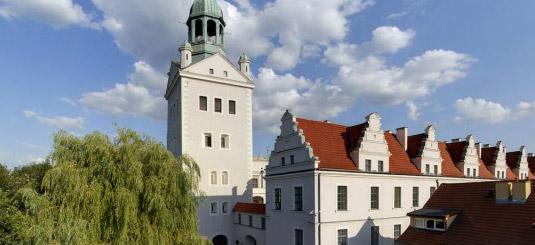
The former residence of the Pomeranian Griffith dynasty now serves all the city’s residents. Heavily destroyed by war-time bombing, the Castle was rebuilt to resemble the seat of the last members of the Griffith family, ignoring later changes made after the fall of this local dynasty.
At the Tourist Information Centre located here, you can get free brochures describing the red route for sight-seeing painted on the city streets. The Castle also includes a theatre, cabaret, opera, cinema and museum of the House of Griffith. Wedding couples are a common sight, as here is the Wedding Hall of Szczecin’s Civic Office. The stage in the main courtyard has hosted famous international artists such as Chic Corea, Marcus Miller, Bobby McFerrin, Mariza and Hugh Laurie.
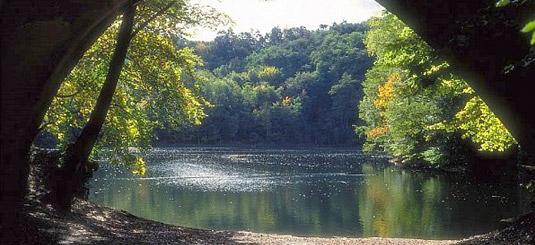
This beautiful lake on the right side of Szczecin, besides the beautiful water in the colour of its name, can boast an interesting history. In the 1860s a chalk mine began operating here for the growing cement industry. 25% of Germany’s cement was produced here. Left over from those times are elements of a narrow-gauge railway and a cave built for demonstrations.
The creation of the lake itself is linked to a mine catastrophe, when workers struck ground water and had to evacuate, leaving equipment on the bottom to this day. Flooding everything, the water reacted with chalk compounds, giving it the emerald colour. The fairy-tale aspect of the place has been well taken advantage of - there are walking trails, camp-sites and the local Tourist Information Centre.
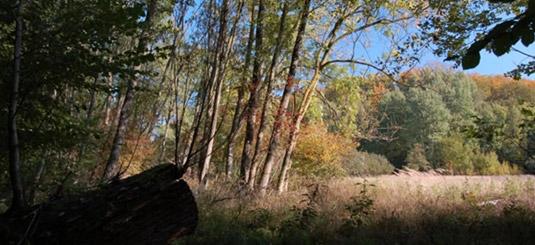
Spread over an area of 80 km2, The Bukowa Forest partly takes in the south-east districts of the city as well as neighbouring counties. On hilly terrain, it has various types of landscape and rarely seen plant and animal species. The network of deep valleys, ravines, streams and many lakes make the forest an ideal place for nature lovers.
Enthusiastic discoverers can go searching for ancient kurhan (burial mound) cemeteries, Slavonic settlements, and discover the pearl of West Pomeranian Gothic brick – the Cistercian monastery in Kołbacz. A number of well-marked trails allow one to choose the best route for a hike, from a short walk to an all-day expedition down less used trails.

Jasne Błonia is a large green area spreading from the City Hall building in the direction of Kasprowicz Park. It includes a fountain, an alley of plane trees and green spaces that fill up with residents on warm days. One of the city’s favourite places for walks, it is worth seeing in every type of weather. The majestic alleys have the biggest number of plane trees in Poland, and they are rivalled only by two monuments that are characteristic of the area.
The first is the monument to Pope John Paul II, honouring his visit to the city and meeting with the faithful in Jasne Błonia in 1987 – the monument was erected in the site, from which the Pope spoke. The other is the Monument to Poles’ Action. Three eagles getting ready to fly represent three generations of residents rebuilding Polish Szczecin. Because of its dimensions, it has become one of the most dominant and recognizable symbols of the city.
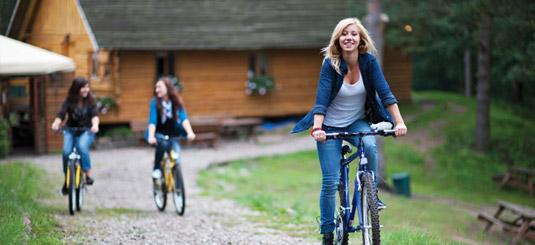
The Głębokie Lake is situated in the north-east part of the city. Easy to get to, it is a popular place of relaxation for the city’s residents. In the summer the beach is full of sun-bathers, the area’s paths are perfect for jogging, and the many camping sites attract bonfire and grilling enthusiasts out on warm evenings.
The surrounding area is characterised by beautiful German villas from the 1930s. The lake is 1.5 kilometres long and 300 metres wide, and is surrounded by a picturesque trail. There are branches that go off and allow one to discover further green areas to the north-west of the city. The meadows and lakes that stretch to the German border have horse stables, heron populations and other types of local fauna.
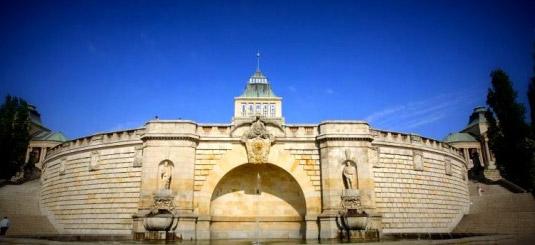
The terrain along the Odra River and Wały Chrobrego is considered one of the most beautiful parts of the city. The lovely development on a slope above the port is the effect of the efforts of the former mayor Hermann Haken. The characteristic buildings were erected in place of the old Fort Leopold, which had protected the city from foreign armies. The imposing steps leading to the current National Museum were supposed to make an impression on steam-ship passengers arriving at the docks. These ships sailed between Szczecin and Saint Petersburg, among others.
In 2013 the renovated Odra Boulevards were opened, making the river bank a popular place for walking. Well-lit and with a few bars, the boulevards have brought the city closer to the river, taking a step towards the pre-war atmosphere of river-side streets full of life and commerce.
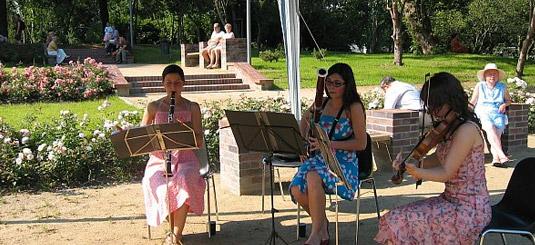
The Rose Garden was established in 1932, with about 10 thousand rose bushes. It is a masterpiece of landscaping with a sculpture of birds setting to flight designed by Kurt Schwerdtfeger, linked with Bauhaus and a professor of the Artistic Crafts School [Szkoła Rzemiosła Artystycznego] in Szczecin.
In the 1990s the terrain was neglected, but thanks to the city’s efforts it was restored in 2007. The colourful flower beds were brought back with more than a hundred types of rose, and the missing sculpture was reconstructed on the basis of the original. It is especially popular when the roses are blooming. Różanka is enriched with temporary, open-air exhibitions and concerts.
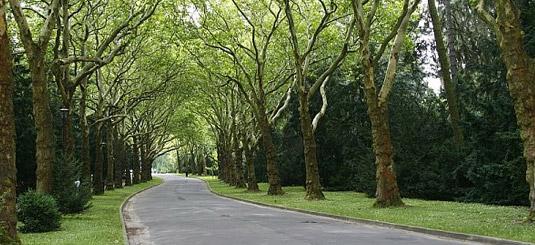
Designed by Wilhelm Meyer-Schwartau and Georg Hannig and established at the beginning of the 20th century, the cemetery is one of the largest and most beautiful in Europe. The 166.5 ha. area is rich in 415 species and types of trees and bushes. The neo-Gothic architecture and wide, well-designed alleys give the cemetery its unique atmosphere.
Designed by Wilhelm Meyer-Schwartau and Georg Hannig and established at the beginning of the 20th century, the cemetery is one of the largest and most beautiful in Europe. The 166.5 ha. area is rich in 415 species and types of trees and bushes. The neo-Gothic architecture and wide, well-designed alleys give the cemetery its unique atmosphere.
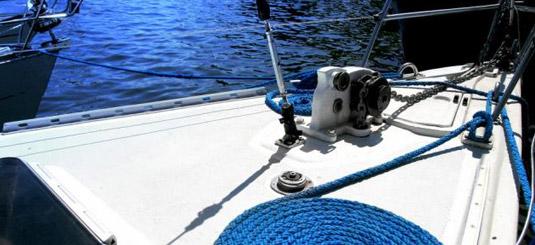
23.8% of the city’s area is covered by water, of which 65 km2 is Lake Dąbie – the only one in the country where sea yachts can moor. Through the Floating Garden development strategy, the city emphasizes water and green areas, and water sports have become one of the strategic points of development. A tradition of training, along with the old and newly-built marinas ensure appropriate facilities and support.
Kayak routes allow one to discover the Odra delta and to admire the city from the river. Events such as the Tall Ships Races attract the biggest and most famous sailing ships to the city, and Szczecin Bay has the infrastructure and conditions for kite- and windsurfing.
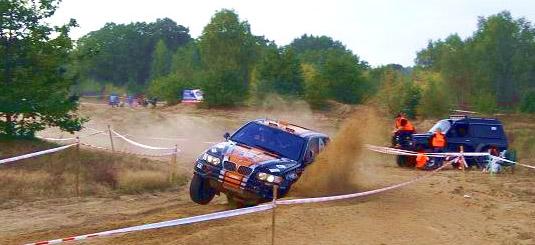
Szczecin is a base of the races that are part of the World Cup in all-terrain rallies. Under communism, the Szczecin area and the current Western Pomeranian region were dotted with terrain belonging to the army, which left wide areas used for military exercises.
This potential has been used and, for example, one part of the rally route is over a former military exercise area near Lake Głębokie. Drivers known from the Dakar race come for the competition, and one section is always down the streets of Szczecin, to the delight of residents.
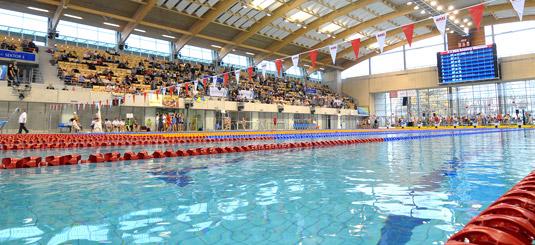
Szczecin is known as a city of swimmers who won Olympic medals. In this tradition, it was decided to build a modern Olympic-size (50 m) pool. Finished in 2010, the object has been chosen to host the European and Polish swimming championships.
Apart from competitions taking place there, the Floating Arena pool is open for any swimmers. As the most modern sporting centre in the city it enjoys constant popularity.
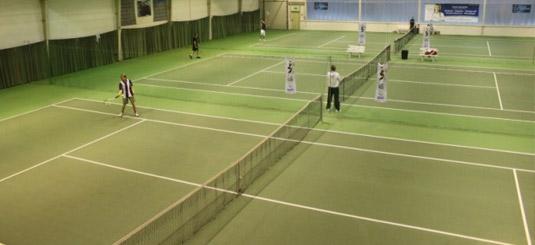
Szczecin is the host of the oldest and most prestigious professional tennis tournament in the country: Pekao Szczecin Open. This event takes place on the courts of the Szczecin Tennis Centre on Aleja Wojska Polskiego and for years has been attracting spectators from Poland and abroad. The tennis centre is a large complex of covered and open-air courts with appropriate infrastructure and professional coaches.
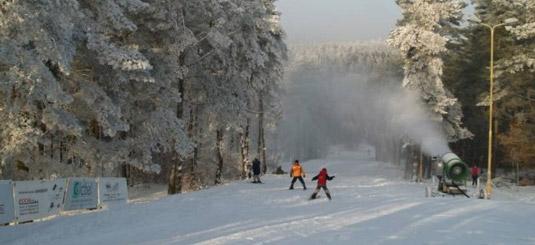
In spite of its location near the sea and far from the mountains, you can also enjoy fun in the snow in Szczecin. In the winter season, Szczecińska Gubałówka opens two well-lit ski slopes with artificial snow, a skating rink and a snowpark built in 2012. In winter and summer there is a wooden hut open, and an open-air grill.
The location of Gubałówka in Arkonski Forest near the picturesque Valley of Seven Mills and horse stables guarantees that that a trip into this region will be an interesting experience.
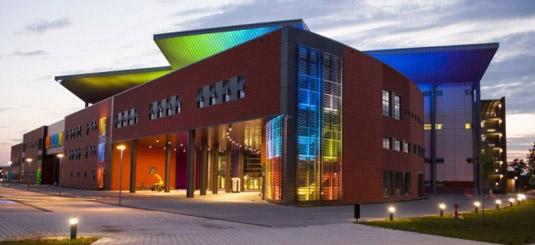
Finished in 2014, Szczecin’s Sports Hall was given the name of its main sponsor: Azoty Arena. This modern hall is the site of important sporting events, musical events and concerts (such as the Eska Music Awards).
There is also a skating rink open in winter, and a fitness centre operating all year. Szczecin’s basketball team - King Wilki Morskie – play their matches there, as do Chemik Police – a women’s volleyball team - Polish champions playing in the Champions League in the 2014/2015 season.
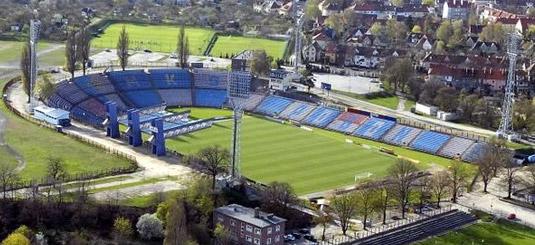
Szczeciński stadion imienia Floriana Krygiera jest miejscem dla miłośników piłki nożnej. Jest to stadion grającej w sezonie 2014/2015 w ekstraklasie drużyny Pogoń Szczecin. Drużyna ta gra w polskiej lidze od 1948 roku, z tradycjami i osiągnięciami sięgającymi nawet wicemistrzostwa polski.
Kiedy samo oglądanie piłki nie wystarcza, można skorzystać z sieci małych stadionów otwartych dla każdego (zwanych Orlikami) lub wynajmować zadaszone boiska dla treningów w każdych warunkach pogodowych.

Szczecin’s real estate market offers a wide range of places to rent – one- or two-room, of various prices and standards. Costs are comparable to those of Poznan and lower than those of Wrocław or Warsaw. New residents of Szczecin gladly move into the low blocks of the green district of Pogodno, towers of the university district of Gumience, or the traditional tenement buildings near the centre. From any of these areas one can easily get to the Metro office.
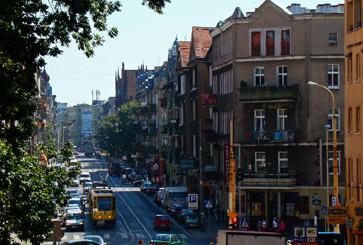
Szczecin is friendly to its residents’ wallets. The cost of living is about average for the rest of the country – one person is able to reside, eat and get around the city for 1500-2000 PLN. A monthly bus/tram ticket for all routes costs 100 PLN, and on ‘Cheap Tuesday’ you can go to some cinemas for 14 PLN. For coffee in popular café-chains you’ll pay, unfortunately, as much as elsewhere… however, it’s worth visiting the cozy, locally-run cafes!
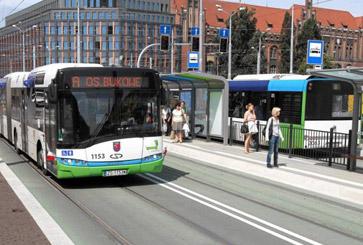
Szczecin’s network of bus and tram routes allows one to get to many places, and is constantly being expanded. You’ll find the latest information on www.zditm.pl. The long-awaited Szczecin Rapid Tram, connecting the two sides of the Odra river, is expected to start running before the end of the year. Car traffic runs rather smoothly (our traffic jams are nothing compared to those in Warsaw or Poznan!), and a large amount of greenery and clean air in the city encourage going for walks.
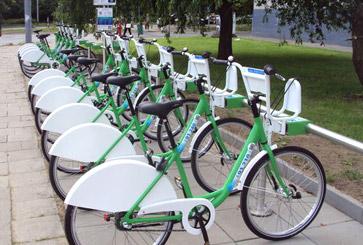
In warmer months of the year, the residents of Szczecin can take advantage of an alternative form of transport in the city: since recently our more active residents can make use of Szczecin City Bikes in the period from March to December! There are more and more stations where a bike can be borrowed or returned, and you can find them on the map here. Bicycles have become very popular – Szczecin residents are happy to take advantage of this healthy and environmentally-friendly mode of transport.

Most of the institutions necessary for official matters are in the city centre. The City Hall (Urząd Miasta) is located in the heart of Jasne Błonia on Plac Armii Krajowej, and nearby – the building of Tax Office No. 2 (II Urząd Skarbowy) on ul. Felczaka. You’ll find Tax Office No. 1 near Brama Portowa at ul. Drzymały 5, and Tax Office Nr 3 in the Prawobrzeże district, on ul. Rydla. You can get your passport made in the building of the Regional Government Office (Urząd Wojewódzki) along the picturesque Wały Chrobrego.
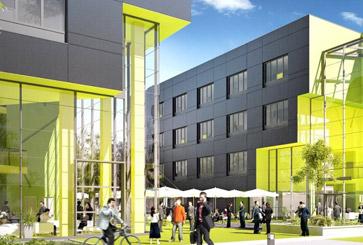
For a number of years, business has been dynamically developing in Szczecin. Currently there are over 67 thousand companies operating here! The city boasts modern office complexes, and total office area reaches 80,000 m2. There are more than 20 companies operating in the SSC/BPO/ITO sector. Outsourcing centres and related services offer services in more than ten foreign languages. Szczecin is attracting more and more people from other regions of Poland and abroad – one can increasingly make use of language skills and obtain international experience.